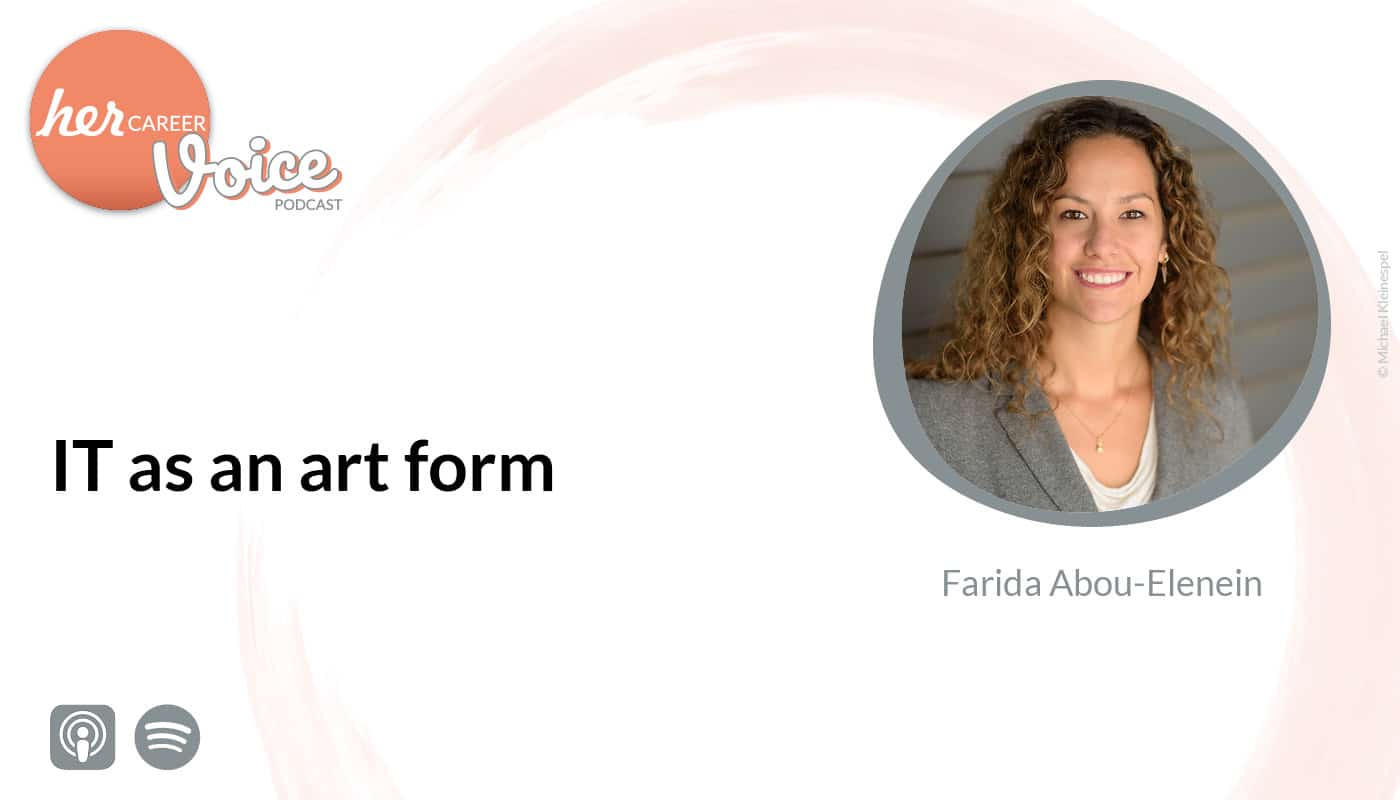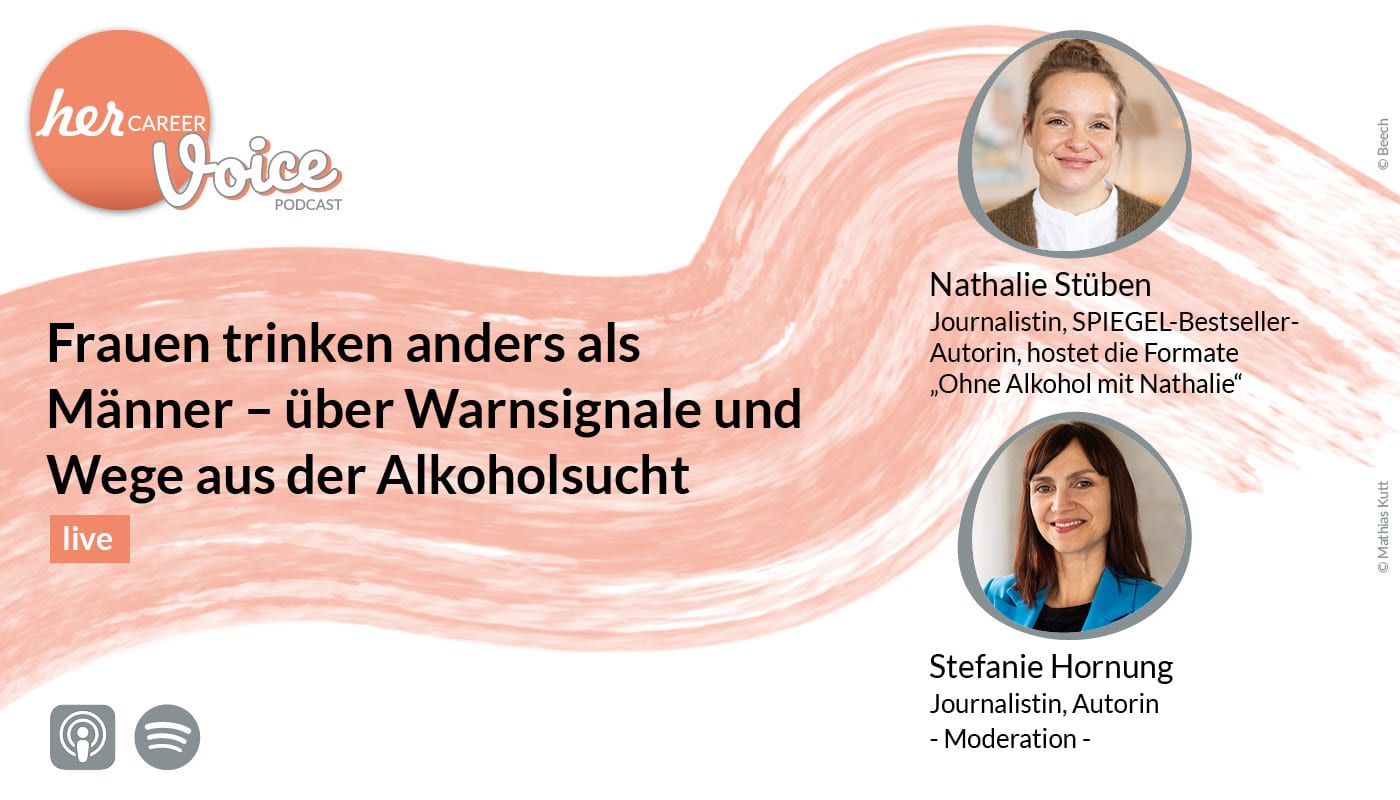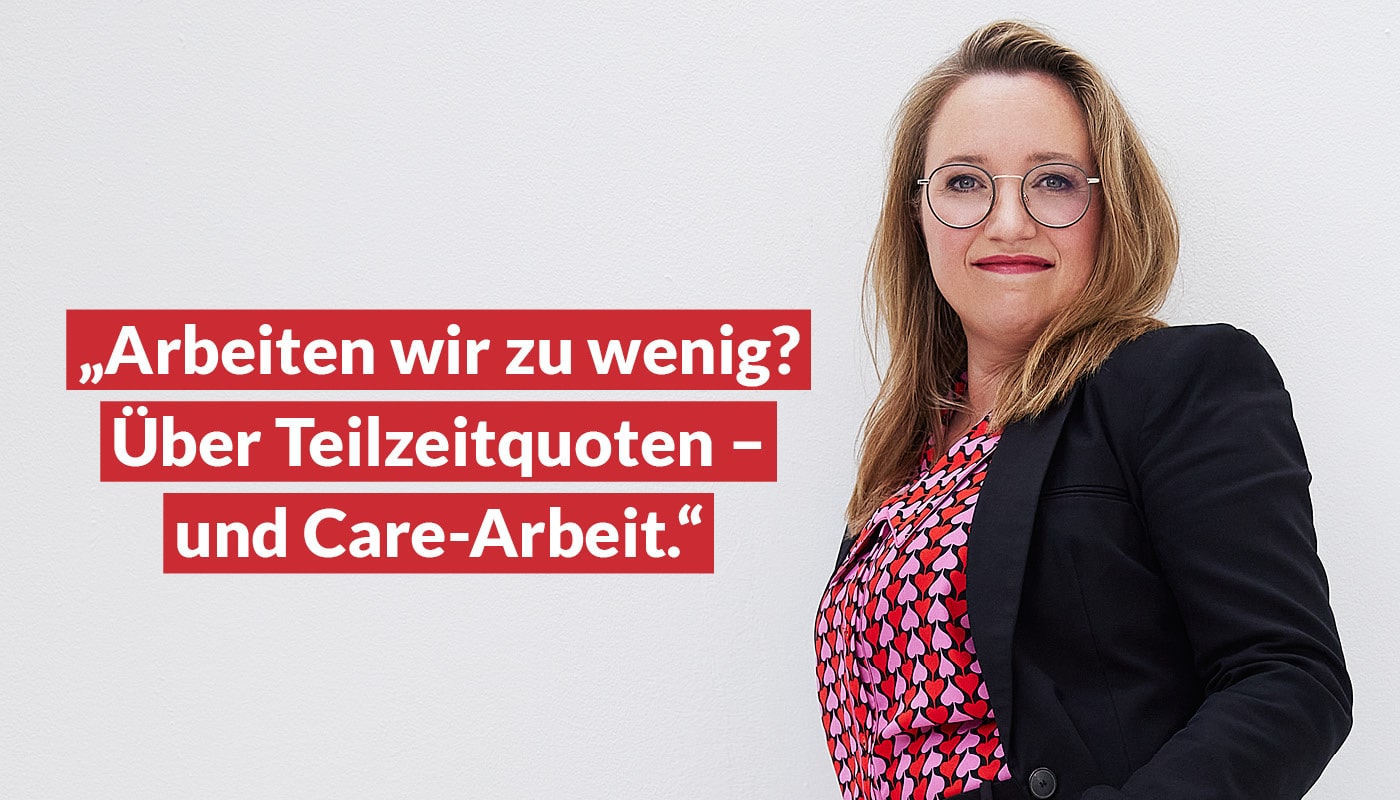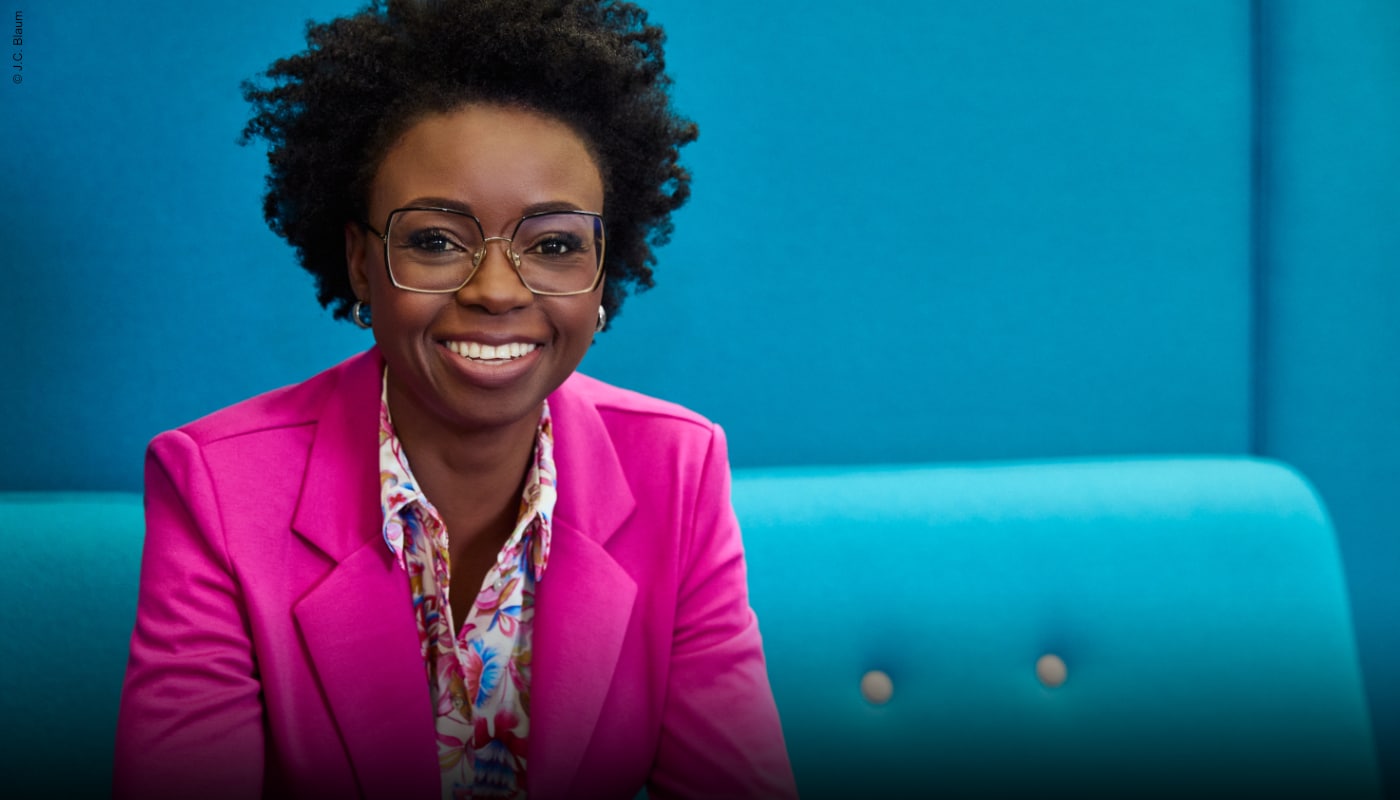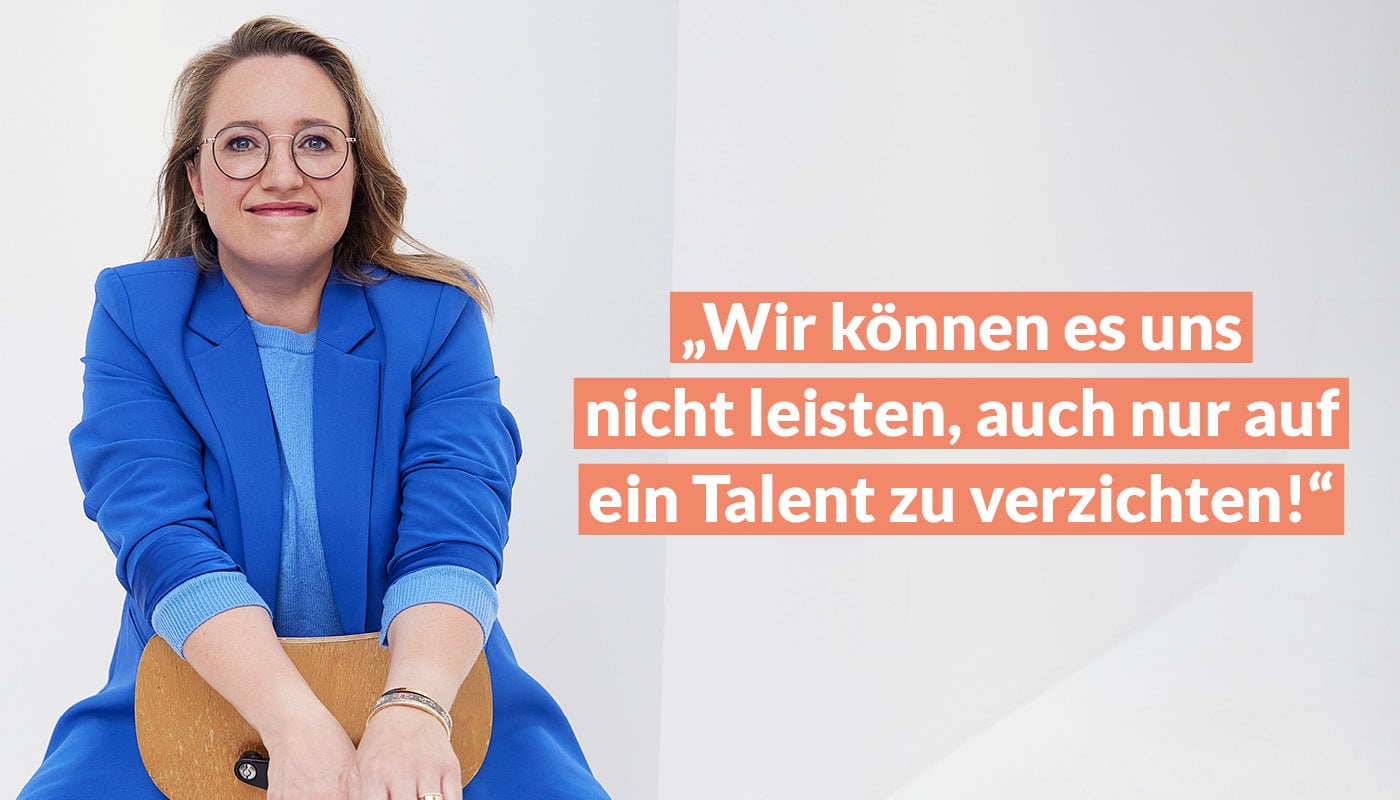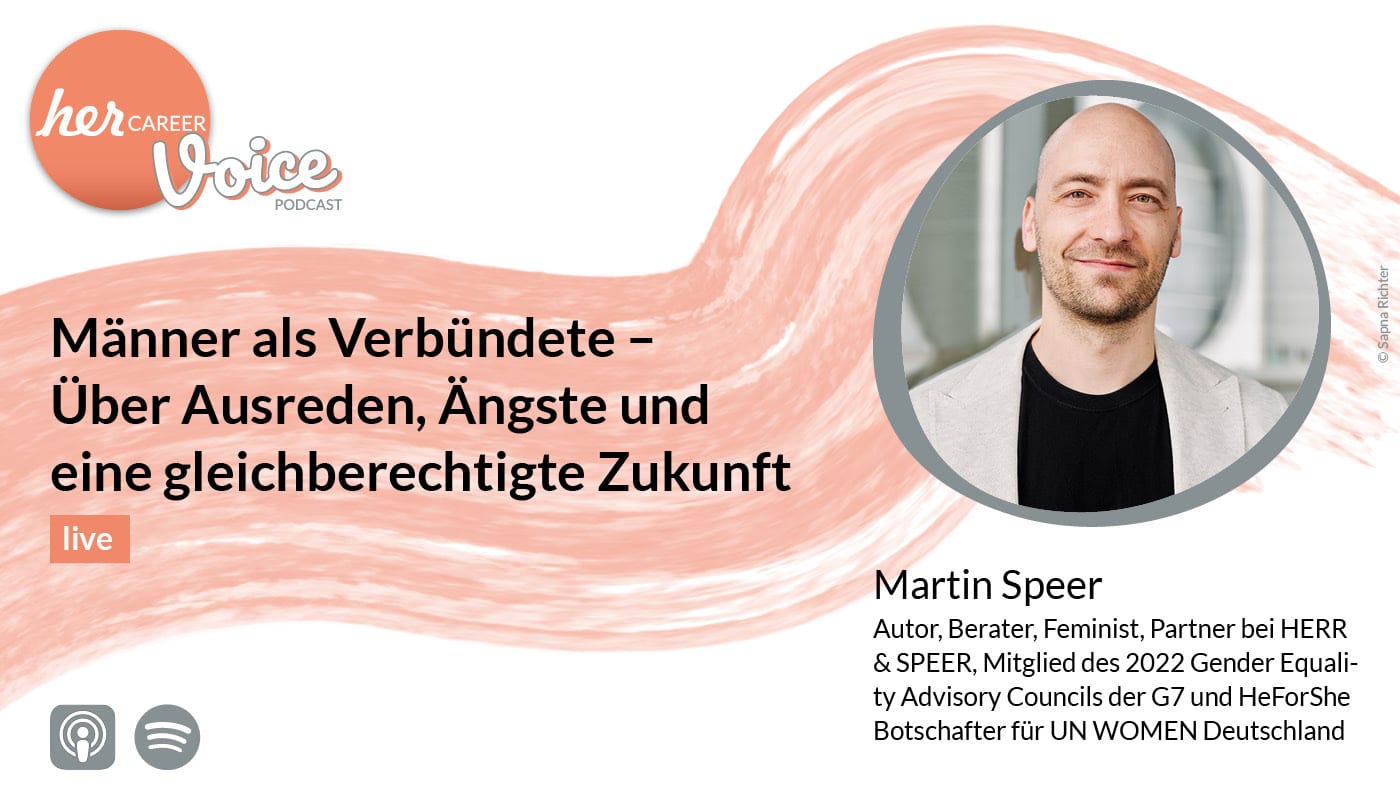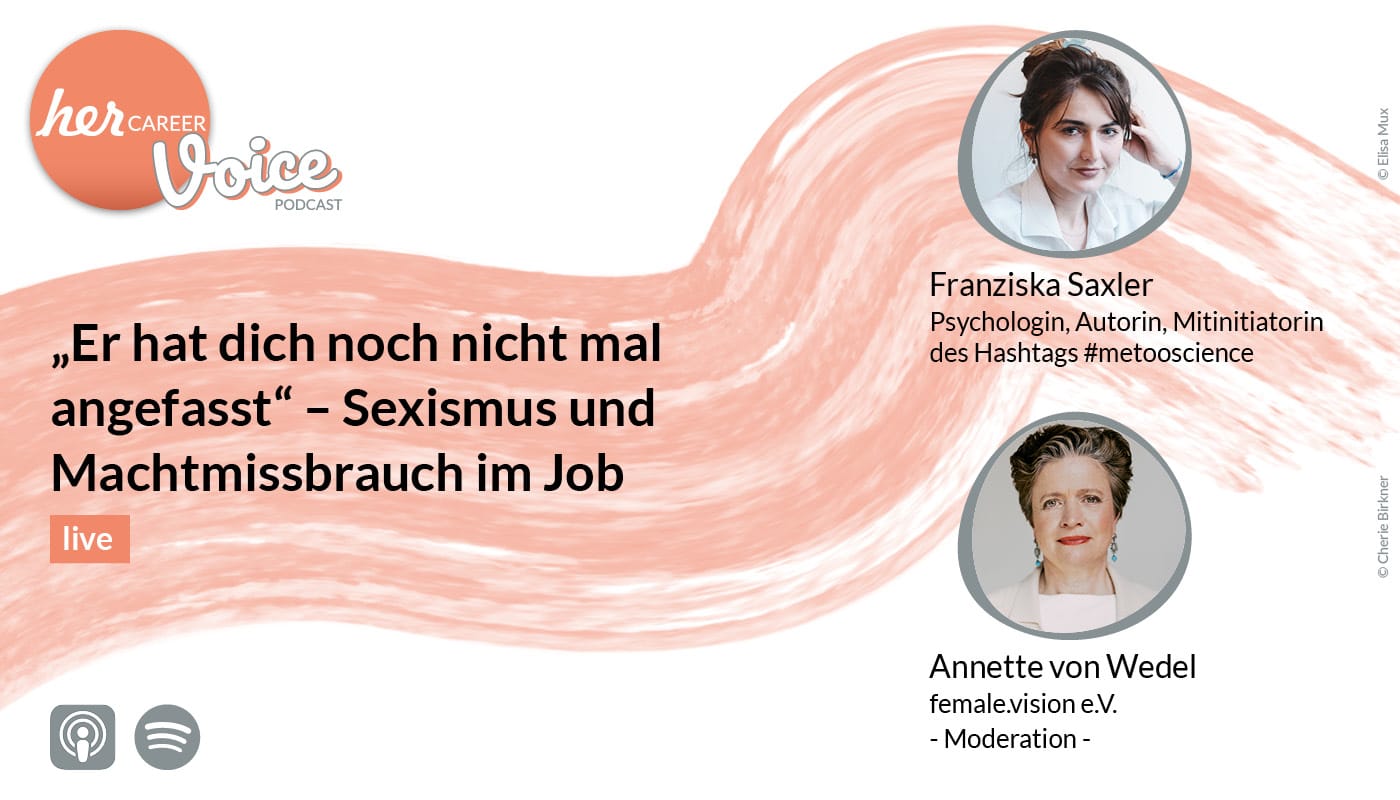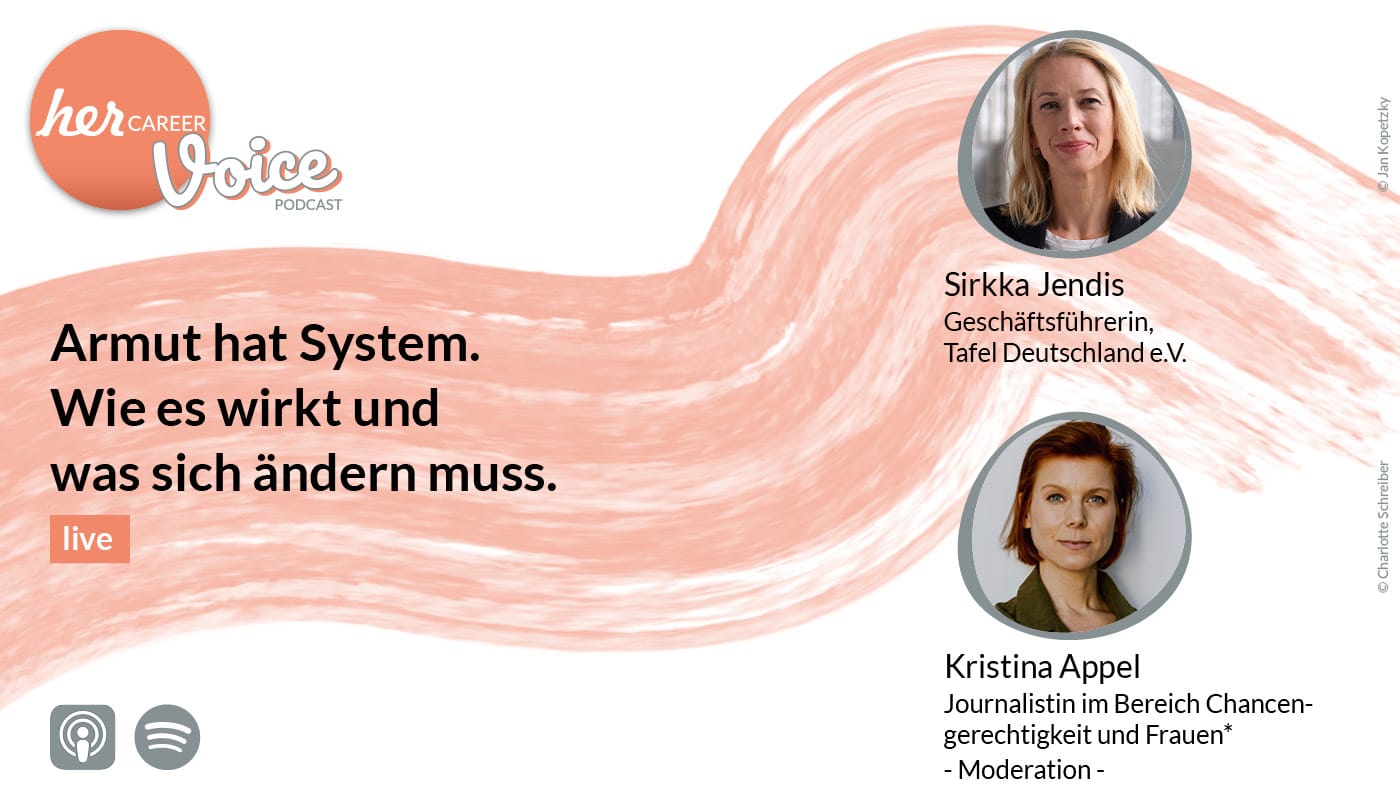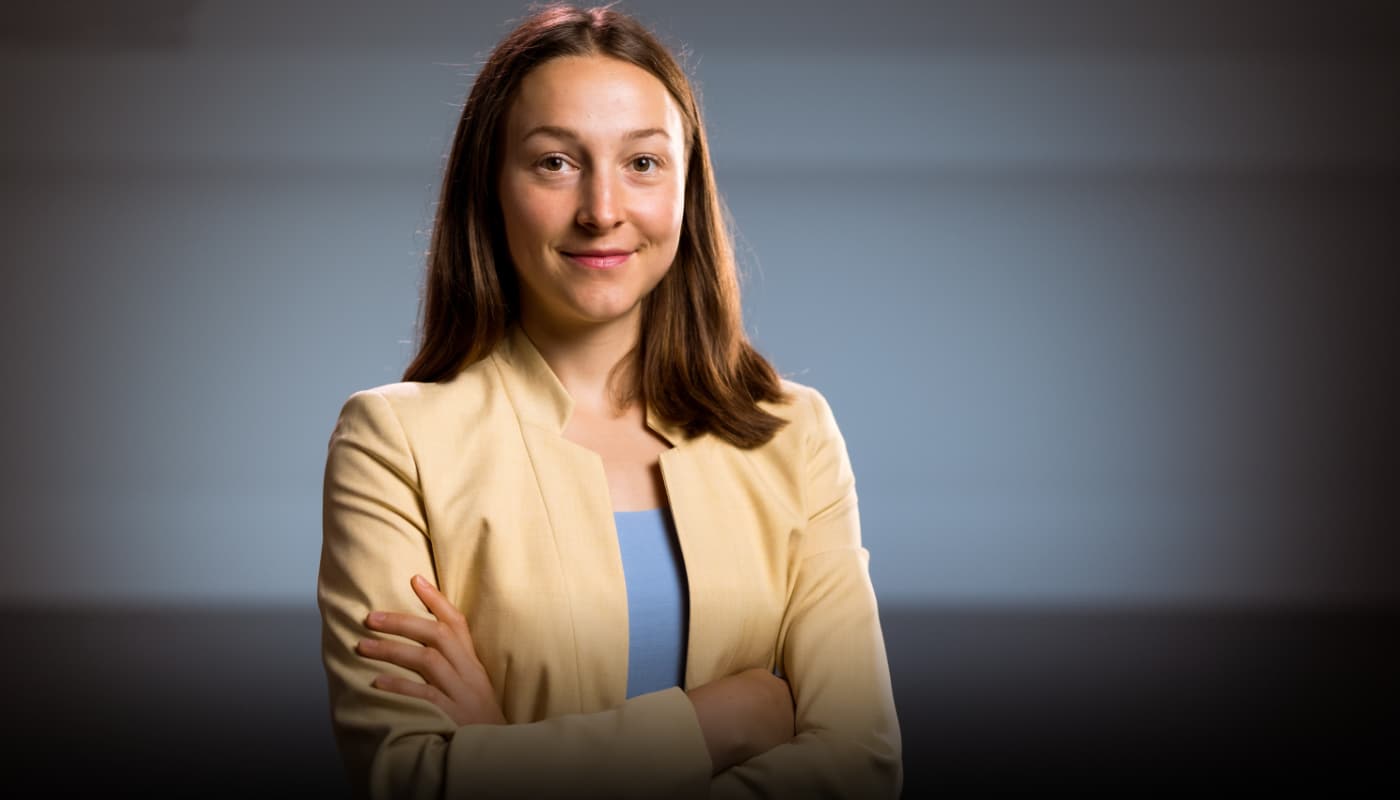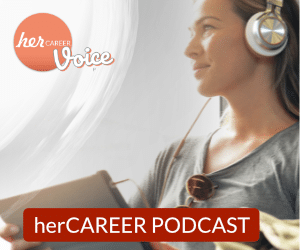How do you find your passion?
As a child, Farida Abou-Elenein wanted to become an architect – just like her father. But as she grew older she realized that her real love was mathematics. In IT she found a way to combine her love for both subjects. Farida Abou-Elenein is certain that IT is more than the stereotypical picture of a young man in a hoodie, coding on his laptop. For the entrepreneur IT is an art form that combines functionality and beauty – in an industry that has space for everyone.
Topics
Economy, Work & New Work | Career & Job Application
Details about the speaker
Farida Abou-Elenein was born in London and grew up in Egypt. As a child she discovered her love for mathematics. Later she studied computer science and architecture. She found her way to Frankfurt where she founded an IT consulting company with her partner.
In this episode, Farida Abou-Elenein talks about the way her father saw and supported her talents from an early age, her successes in a male dominated industry and her experiences as a single parent in Germany.
Farida Abou-Elenein [00:00:00] I want to invite young girls and women to bring their creativity, take away the intimidation of IT and come and work for that industry.
Moderation [00:00:22] Hey and welcome. You’re listening to herCareer Voice podcast. This podcast is the one to listen to for diverse perspectives about the social, political and scientific aspects that define our workplaces and especially the female career planning. Whether it’s professional growth and self-development, entrepreneurship, finances or the all in all acceptability of our professional and private lives. We want to know more about female careers, learnings, experiences, challenges and how they’ve grown from them.
IT is an art form. Farida Abou-Elenein is certain that IT is more than the stereotypical picture of a young man in a hoodie, coding on his laptop. For the entrepreneur, IT is an art form that combines functionality and beauty in an industry that has space for everyone. Farida Abou-Elenein was born in London and grew up in Egypt. As a child she discovered her love for mathematics. Later, she studied computer science and architecture. She found her way to Frankfurt, where she founded an IT consulting company with her partner. In this episode, Farida Abou-Elenein talks about the way her father saw and supported her talents from an early age, her successes in a male dominated industry and her experiences as a single parent in Germany.
Farida Abou-Elenein [00:01:55] Hi, welcome to my podcast. To my first ever podcast actually, I’m sure you know how nervous someone would be, starting to record their own voice and to tell their own story. I thought a lot about what I wanted to tell, and I thought a lot about how I want to tell it. When I first started IT, I never thought that I would say the sentence, but I honestly now believe and can tell you that IT is indeed an art form.
Why do I come up with this statement and where it comes from? I can explain in many ways, but I think the best way to do that is to start with where I’m from. Who am I? My name is Farida. I think you know that much so far. And I was born in London. I didn’t stay there long however. My parents, very quickly after or even before my first year of life, decided they would move back to Egypt. So all four of us, meaning my Egyptian father, my German mother and my older brother, went back to Egypt to live in a small town called Hurghada, which maybe some of you know as one of the diving capitals of Egypt. I grew up there until I was about 15 and studied in a local school there. It was a private one where it was mostly English and where I did not really excel in many subjects at the beginning. It took me years to learn how to study, and when I did, I was already ten, maybe 11. This is when I started really understanding how to study, learned how my mind catches information and stores it. Because everybody is individual in the sense. And one of my main activities was mathematics. Mathematics grew to be my warm ups before studying. It grew to be a big passion of mine. I found it so exciting to be able to solve a mathematical problem. If I wanted to study Arabic or I had to study geography, or I needed to study chemistry, before I did any of the things, I would open a mathematics book and I would start working on the exercises, whichever they were, as a simple warm up before I got to the main meal. Like an appetizer, if you may. One day when I came home after an exam which happened to be mathematics, I sat with my father like I used to do, and I wrote down exactly what I did in this exam. I showed him the exam paper. I solved the problems. I sat with him and wrote all the steps in pencil on a different paper. I literally worked through the exam one by one while he sat there and watched me. Something I really took to heart and I think many parents should do that is this ability to listen and hear their children. He was so impressed with how quickly I was solving mathematical problems that he told me my studies or my brain would be wasted in architecture. He was an architect, so I should follow up with that point. And he was a great architect, at least in my eyes, and at least from what I heard from many, many people that knew him, he was an artist when it came to that a lot more than he was an architect. And I wanted to be exactly like him. I wanted to be an architect. I was very excited about that. And it was set in my mind. And I think like many children, they look up to, especially if they have good relationships with their parents, they look up to that person, whether it’s their mother or their father. But he sat with me after that show of an exam paper that I made and told me: No, architecture is not your thing. I think you should get into IT. Now, we’re not talking about someone in Germany or someone in America, someone in England who maybe has had some information technology subjects given to her in school or maybe was part of a STEM program or or anything like this. No, no. This was a young girl who has never touched a computer. At that age, at ten or 11 is the first time I actually saw a computer. It belonged to my father. And he used it because he needed to learn AutoCAD, because he believed if he doesn’t, he will be left behind in the world of architects. And on there I used to just play things like, I don’t know, Doom and some dust games back then. If anybody knows what that is now. And I didn’t know what IT was. I had no idea what he meant. And I said to him: But why? What do you mean? And he basically said that I should definitely get into IT, that IT is the future, that computers are our future, and that my ability to do mathematics the way I did was perfect for it, which still didn’t make sense to me because in my head, if I study IT, I have to study computers. What has mathematics anything to do with computers? And until recently, to be honest, a lot of other people thought the same thing. Welcome to the data science world. After long topics and long discussions that I will not maybe get into right now, I was finally convinced to take that route. And at the age of 14, started to apply to universities in London with my father through UCAS. And I remember the letter that I sent with my application where you normally have to convince someone to take you into their university and accept you into the university. And this letter I mentioned that I have a flair of art and would love to combine my ability to create and be creative with technology. And this is what I want to bring to the IT world. This is me at 14, and I am not sure why and how I came up with that in my head because, I mean, if I thought mathematics had nothing to do with IT, you don’t want to know, how would I think that art had anything to do with it? But in my mind, if I’m going to go into IT, I would create software. And if I were to create software, that would be something creative. I need to think of the whole thing. I need to think of the design. I need to think of how it will look, what it would do, its beauty and its function, which is the number one guideline in any design. It has to be functional. It also has to be beautiful. It can be one or the other. Otherwise, it wouldn’t be successful.
At 15, my father passed away suddenly. It was a shock to the whole family, but it made me even more determined to continue with our plan. So we traveled to England, to London again, and I started university at 16 and I studied computer science and mathematics. I could not not do mathematics, so I decided mathematics would have to be my warm up for computer science. And it was a crazy mixture because the level of mathematics we were doing in Egypt was so much higher than the beginning mathematics that you would do at university in England. So I was way ahead in mathematics and I was way behind in computer science. I would go into the computer science subjects and lectures and really worry because I did not understand what an algorithm was before I even started. So it was quite a struggle. But I completed my studies and I started working.
Working as a software developer was not a thing I expected it was. I believed I would create something. And as much as I love the first company that I worked for, Straight Logics it was called, and I loved my colleagues and they taught me so much, not only on a personal level, but also on a professional level. I still did not feel like I was achieving what I wanted to achieve. I still was not creating anything. I was using pre invented code, invented by the directors of that company, to build something and maintain it. And to me that started to become slightly uninteresting. It was not creative. I wasn’t creating a product from scratch. So I decided, well, okay, I’m in the IT world now. How about I learn about games programing? So I went off, started a part time course in games programing, learned OpenGL, used my C++ knowledge over there and started working for three months for a games company, which then made me realize, okay, hold on, I’m in a job that is having three different departments now. Not just one. No, no, three different departments. One department is doing the art work and the design. Another department is creating the models, the 3D models out of that design. And then the third department was building the engine or, you know, it had sections, the games engine, and you’re still ending up as a coder reusing lines that you use very often and adapting them to each new part. And it still was very confusing how I still cannot create a product from scratch in a job like that. Now I’m going very much into the history and where I am, but I need you to feel where I was and why I come to the statement that is the title of this podcast. And for that you need to feel or understand where I was coming from.
I left IT, I decided it is not for me. I love programing and I love the technology and I love the technical challenges I had but it was not me. I needed creativity and this is where I came up with the weirdest and strangest decision of my life and that is of completely going away from the IT. world and jumping into architecture. I went back to my first dream. I thought I was honoring my father whom I lost too young. I felt like I was honoring my real dream. And without doing or taking this step, I thought to myself I would feel so much more regret later on if I say, well, what if I just studied architecture and became an architect and that would have been my life? I hated the idea of regretting something for the rest of my life. So I am a risk taker, and I know that. I’m impulsive, I’m a risk taker. And I took that risk. I jumped out of the IT world. I moved to Egypt and I started studying architecture. A side note, I got married as well and started a life personally in Egypt. I got pregnant in the third year and continued studying while I was pregnant – of course, as anyone would. And yet one day, three lovely ladies brought me into the HR department of the university I was at and told me: So you’re pregnant? And I said, Yes, obviously. And they told me: Well, you have to leave. And I understood later that they were kicking me out of university for being pregnant. At the time it was an extreme shock. I felt like it was really unfair but it happened, you know, and I dealt with it. And I had to leave the university, so I left. But I didn’t leave and give up. Although I was very close to doing so.
I came back to Germany and I worked on completing the degree, at least the lowest degree possible of architecture. While completing the studies I already knew I’ll be back to IT and I had to find a way to do that. I could not stay away from it. I fulfilled this hunger, this need for learning and understanding architecture. And I think it has a lot to do with losing my father. It has a lot to do with the passion he showed to art. It has a lot to do with proving to myself that I could study architecture but also that I wanted that knowledge. I wanted to know how. I wanted to remember things my father did and understand why he did it that way. And to me that was a success. Definitely not a waste of time, like many would say.
After giving birth, I separated from my husband or my first husband, so to say. And I decided I need to find a job, I need to provide for this child. I need to find stability, because at the end of the day, I was then the only one that was supporting that child. And I looked for a job and by chance I came across IT consulting, which for me at the time was a perfect jump because in IT consulting you don’t stick to a routine, you don’t stick to a job for 20 years that is using the same code. No, you go from one project to another. You might be a test manager on one project and you might be a developer on another project. You might be a Scrum master in another project. And that’s exactly what happened to me, by the way. But you get to know the different parts of product development, and here is where I use the term product development. I do not say software development anymore. I do not say coding from now on. It’s called development or product development because this is where I started on my journey towards IT as an art form. This is the point where I tell you to let go of the stigma that IT is some form of a young man sitting in a corner coding with a headset, maybe hacking here or hacking there. Let go of that image. This is a stereotype that has made me even act cool or try to act like a boy. Forget that image. Product development is creativity. It is a form of bringing creativity to IT. You are not a coder anymore. You are not a tester anymore. You are not a designer. You are a developer. You are a product developer. You have to be all of those things at once. Nowadays, product developers are part of every step of product development. They need to be involved in the requirements gathering. They need to be involved in the architecture of the product. They need to be involved in the backend. They need to be involved in the frontend. They need to understand the design and accept the design, love the design, to be able to take responsibility for the product as a whole and not for parts of it. Any developer nowadays that sits there and says this part of the code I did not write so I don’t care or come on a button being blue or green is not my responsibility or oh, there’s a bug on production. Well, it happens. All of this makes you a coder, not a developer, and we need to see the product as the big picture. We need to work as a team to build that product and create it together. And this is modern product development and there, exactly there is where I found my passion. I found the ability to create something from scratch, whether it’s in the architecture of it, whether it’s in the design of it, whether it’s in the idea itself, and to be part of every step of that lifecycle, of that product’s lifecycle, that is it. People make IT so complex, but I promise you it is not get away from the typical job descriptions, get away from that stigma of it being a man’s job. It’s not any. Get away from there. Be feminine, be creative, be artistic, be proud of your femininity, and be part of the IT world. Be part of that product development. And through my speeches, through this podcast, through any talks I have in the future, through the company I built with my now husband – we’re building a company that basically brings you no job description. And it brings you a blank contract. Forget the legal jargon that goes around it, but it brings you a contract where you could come and say: Well, I feel like I want to learn the different parts of the IT world before I make a decision about what role I want to take on a project. Well, then we invest in you. I want to be able to work part time and the other half of my time I want to travel. Well, then do it. I want to invite young girls and women to bring their creativity. Take away the intimidation of IT and come and work for that industry. You will find your passion and it doesn’t matter if you start at 15 or if you start at 27 like I did. But you will find that passion. I invite companies to share their ideas, to open up their minds to the possibility of hiring someone not for a specific role with a specific competency, but hiring someone who has the passion to learn, who has the passion to jump in, who has the character and the strength to talk to people and to get things done. These people, grow them and bring them into the world of IT. IT is an art form. Go and create something.
We are proud that you are part of the herCAREER community and thank you for helping other WoMen by lifting them. This is what female empowerment sounds like.
